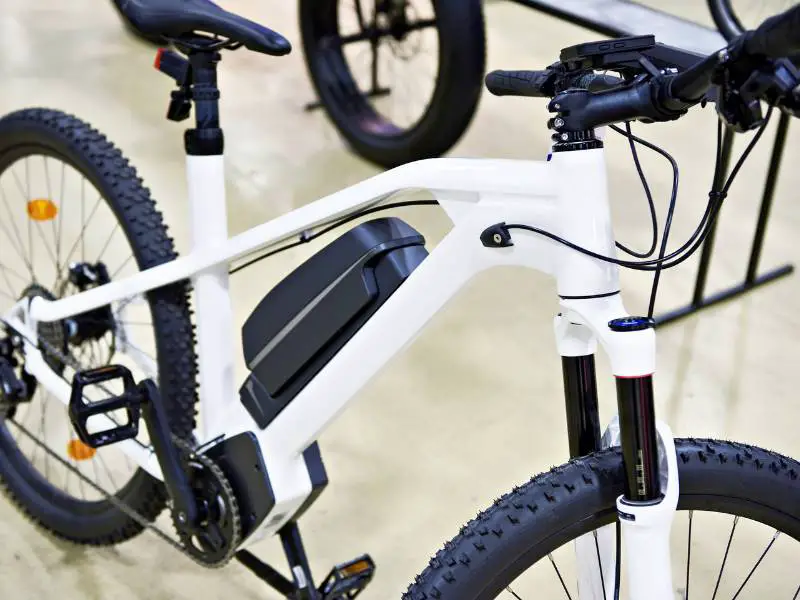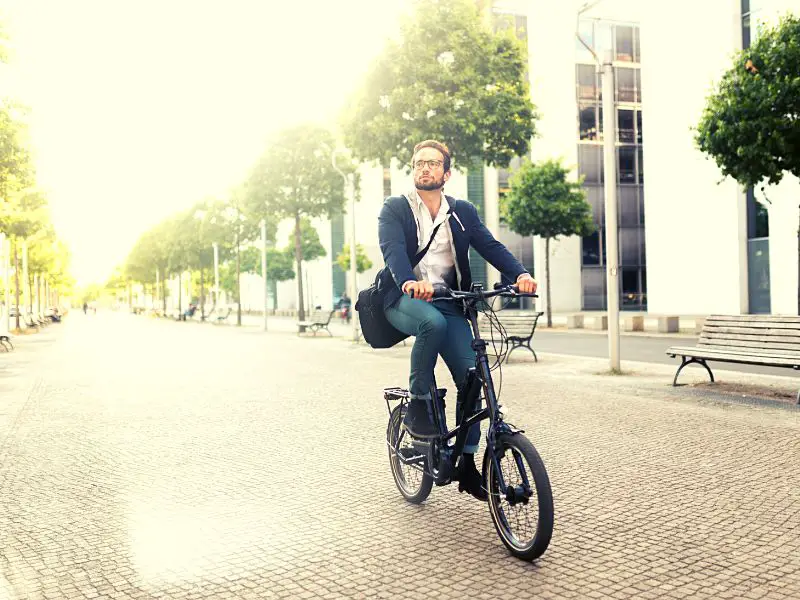Electric bikes have risen in popularity due to their convenience, speed, and ability to climb steep slopes. While many people use their e-bikes for recreational riding or quick errand runs, others want an e-bike that can power them through their daily commutes without recharging. Maximum electric bicycle speeds are affected by various factors, including the tires’ size, the motor’s strength, the voltage, and even the wind. Additionally, state and federal laws set the maximum legal speeds in public places.
This article looks at how fast the most common electric bikes can go, what factors influence how fast an electric bike can go, and what rules typically govern electric bike speeds.

What Are Electric Bikes?
Electric bikes are a form of human-electric hybrid vehicle. They combine a bicycle with an electric motor and battery system. An electric bicycle (or e-bike) offers two principal advantages over traditional bicycles: more excellent range and the ability to assist the rider with pedaling. The rider can pedal electric bikes or be configured with an automated bicycle drivetrain, also known as a pedal-assist function or throttle (or twist grip), which consists of a small electric motor that assists the rider with pedaling.
Are Electric Bikes Fast?
In a nutshell, they certainly can. They get you going far faster than pedaling alone, but they have a maximum speed beyond which they provide no more assistance.
Electric bikes, also known as EAPCs (Electrically Assisted Pedal Bicycles), include motors that let the rider attain speeds of up to 28 mph. You can go faster, but it’ll take effort from your legs.
What Are the Classes of E-bikes and Top Speeds?
In the US, there are 3 classes characterized by the kind of assistance and how fast the motor is. Take note: Even though you can reach speeds of up to 30 miles per hour on an electric bike, it isn’t always safe or practical wherever you go.
Depending on the model of your e-bike, different cities and states around the United States have specific speed limits and guidelines. To learn the rules in your area, do a quick online search or call your state Department of Motor Vehicles.
Here’s how electric bikes are defined according to their classes.
- Class 1: These e-bikes have pedal assist but no throttle. These bikes can travel to about 20 MPH.
- Class 2: These e-bikes have a pedal assist and a throttle. These bikes have a maximum speed of 20 MPH.
- Class 3: These are speed-pedelec bikes that can travel at a speed of up to 28 MPH. As for the US regulations, these bikes need to be registered because they fall in the mopeds category. These bikes are not ridden on the road and not on bike lanes.
How Heavy are Electric Bikes?
Unfortunately, electric bikes are heavier than regular bikes because of the battery. Nonetheless, not all of them are enormous monsters!
The lightest foldable electric bike series you can have is 20 lbs.

Some Factors That Affect Bike Speed
Your bike’s speed depends on several outside factors, including your physical condition, the direction and intensity of the wind, and the outside temperature.
- Controller Amperage: The controller amp is the material that transfers electricity to the motor. Basically, the higher the amps, the higher your bike’s speed. Though many e-bikes claim to have a 750W motor, the power isn’t available since the control amp isn’t strong enough.
- Motor: In the United States, Motor power is regulated to keep you from going too fast for local conditions. Bikes with engines more powerful than 750 watts should only be ridden on private roads, designated dirt bike trails, or racetracks.
- Voltage and Battery: The efficiency and longevity of your electric bike are both affected by the battery pack. If you ride your bike for commuting or live in a densely populated area, fast e-bikes with high voltage and a high-quality battery are ideal. Most electric bikes have a voltage range of 36–48 volts. Lithium-ion batteries are known for their superior longevity over their lead-acid counterparts.
- Wheel Size: Most electric bicycles have wheels with diameters of 16, 20, or 26 inches, respectively. Wheel sizes 16 and 20 inches are less standard due to their poor aerodynamic performance. With a 26-inch wheel, you won’t have to worry about losing speed or stability when you roll over obstacles like speed bumps, potholes, mud, or curbs.
- Tire Pressure: A high-pressure bicycle tire will improve speed on a completely smooth road. However, the majority of roads aren’t in pristine condition. Simply reducing the pressure in your tires can make them more effective shock absorbers, protecting your bike’s rim and grips from damage. It will allow you to bike faster without wobbling or swaying.
E-bikes Safe Passing Laws
If you and others around you follow the rules for safe passing, everyone can have a good time on the road. You may learn more about the different safe passing legislation in each state here. It would be best if you always looked for potential dangers, such as other cyclists and cars. When passing other motorcyclists, do it on the left and give them plenty of warning. Accessories like bike mirrors and bells might also alert drivers that you’re in the area. It’s also good to make yourself more visible to motorists on tight roadways by wearing bright or shiny clothing.
When passing other riders or pedestrians, you should typically give a distance of about three feet of space. Cars should maintain the same safe distance from bikes as pedestrians, and if that’s not possible, they should reduce their speed while passing cyclists. However, you can never guarantee that everyone behind the wheel is paying attention. They might be preoccupied with something else, like their phones or passing vehicles. As a general guideline, you shouldn’t pass someone if doing so may endanger you, them, or anybody else.

Related: What is E-Bikes, Start Cycling to Work, Why Gas Is So Expensive, Sustainable Transportation
Final Thoughts
An electric bike is a marvelous way to get around under many circumstances, including commuting or leisure rides. It’s eco-friendly and very affordable compared to cars. Unlike cars, electric bikes don’t take up space in a garage or on your driveway. They don’t cost much to maintain either, and you won’t need to pay for fuel or road tax. Plus, it’s generally a greener option than driving a regular car.
A car can burn through lots of carbon and emit lots of harmful pollutants in the air, while an electric bike only produces small amounts of carbon dioxide and emits no harmful air pollutants. The only problem is that it’s still a new industry, and there aren’t many shops specializing in them compared to regular bikes. But overall, electric bikes are indeed the future of local transportation.
Keep in mind that rules and regulations might change at any time. There are general rules addressing e-bike speed limits, e-bike helmet legislation, and other restrictions relating to e-bikes that have been passed at the federal level. However, many states have somewhat varying interpretations and enforcement of such laws. Make sure you have the most updated copy of the legislation in your city and state. Keep safe and happy biking!

3 thoughts on “Everything You Need to Know About Electric Bike Speed Limits”